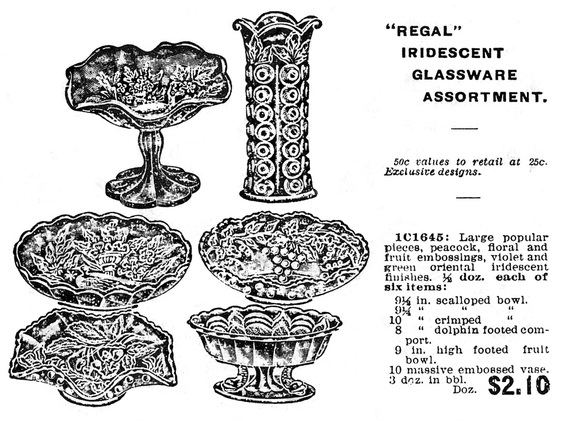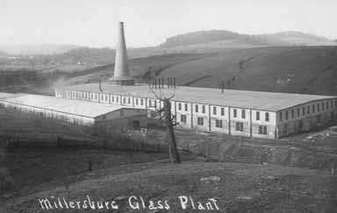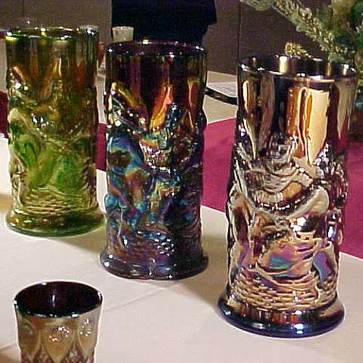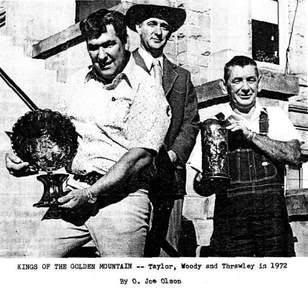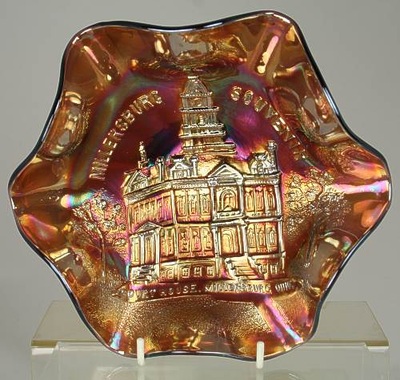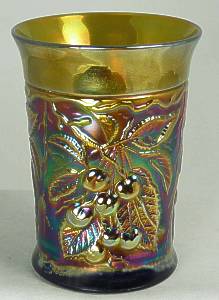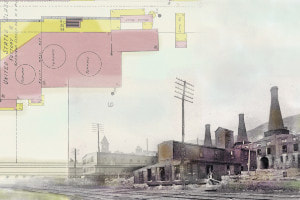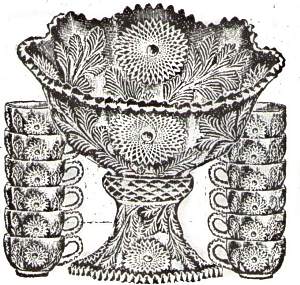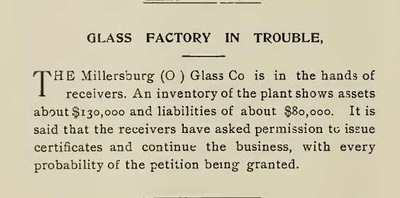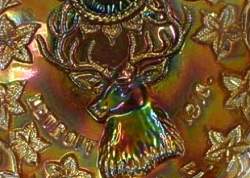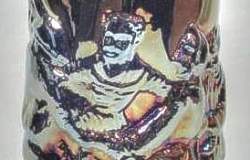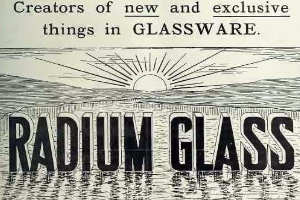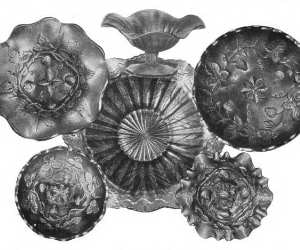Millersburg (Millersburg, Ohio)
|
Millersburg Glass Company was founded in 1908 and it went against the trend of locating in the Ohio Valley. Picture instead, the low rolling hills and beautiful pastoral countryside in the centre of the Amish heartland of scenic Holmes County.
It was the brain-child of John W. Fenton (the brother of Frank L. Fenton with whom he had worked the Fenton Art Glass Company). John Fenton's crusade to produce fabulous glassware began in this idyllic spot - shown above - where the stack of the newly built Millersburg Glass Plant dominated the rolling landscape of Ohio.
|
Yet, it ended just four years later. Millersburg Glass Company was extremely short-lived and it still has an air of mystery about it. The company filed for bankruptcy in 1911 and closed the following year. The high quality of their glass, the short period of production and the difficulties of the latter years have all combined to make much of Millersburg’s Carnival Glass somewhat scarce and much sought-after.
Typical of Millersburg's glass was a shiny yet multi-coloured, mirror-like iridescence known as “Radium”, but Millersburg also produced a sought-after satin effect that sometimes also has stretch iridescence. Three colours were in general production; marigold, amethyst and green, while blue and vaseline were rarely used and are subsequently highly prized. Bowls and water sets are the shapes most often seen. Plates are rare and it is fair to say that Millersburg’s vases are the truly high dollar pieces.
Typical of Millersburg's glass was a shiny yet multi-coloured, mirror-like iridescence known as “Radium”, but Millersburg also produced a sought-after satin effect that sometimes also has stretch iridescence. Three colours were in general production; marigold, amethyst and green, while blue and vaseline were rarely used and are subsequently highly prized. Bowls and water sets are the shapes most often seen. Plates are rare and it is fair to say that Millersburg’s vases are the truly high dollar pieces.
|
Millersburg’s Peoples Vases have achieved a sort of notoriety because of the rarity (about 10 are known) and relatively high value. The picture below is a rare event: three Peoples Vases in one place (green, blue and amethyst).
|
This picture was taken on Oct 6 1972 by Marilyn Scherer editor of the Farmer-Hub newspaper. It shows (left to right) Henry Taylor, John Woody and Charles Thrawley. John Woody had auctioned, on the steps of the Millersburg Courthouse, a major Carnival collection owned by Ray Wishard.
Henry Taylor is showing an amethyst Big Thistle punchbowl he had bought from a dealer for $4,800 - to date only 2 examples are known, and Charles Thrawley is displaying the then-known, second amethyst Peoples Vase. |
As only a few Peoples Vases are known, they have been well documented. The first record of a Peoples Vase being sold on the collector market was in 1959 with two specifics in the 1960s. A blue example sold at a 1963 Antique Show in Tulsa, Oklahoma for $75 while a green one sold in 1965 in an art glass shop in Chicago (apparently it was filled with artificial flowers) for $75. The latter vase changed hands eight years later for $7,100.
Using original research, and with sincere thanks to Mark Boley, Director of the Millersburg Glass Museum (Holmes County Historical Society), we have charted the full Millersburg story, from its beginnings when the ground was first "broken" for the construction of the factory to begin, to its sad filing for bankruptcy and closure. Click on the pictures below to read the whole story using contemporary press reports and other archive material - Magnificent Millersburg (Part 1 - The Rise) and Magnificent Millersburg (Part 2 - The Fall).
Read and See More about Millersburg - click on any image.
